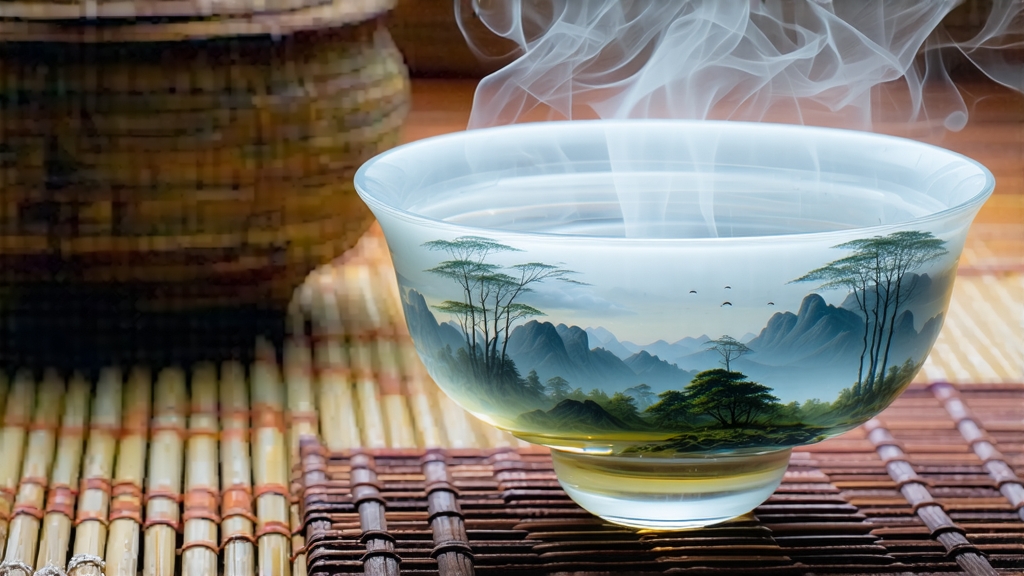
When Chinese tea lovers speak of “white tea,” they are not referring to a cup that lacks color; they are invoking a whole philosophy of restraint, a tradition that asks the leaf to speak for itself with as little interference as possible. Among the three classic grades of white tea—Silver Needle, White Peony, and Shou Mei—none embodies this minimalist ideal more purely than Bai Hao Yin Zhen, literally “White Down Silver Needle.” Revered since the Song dynasty, celebrated by emperors, and now quietly conquering specialty cafés from Brooklyn to Brisbane, Silver Needle is both the rarest and the most subtly expressive style of white tea. To understand it is to listen to the soft dialect of Chinese terroir, weather, and time.
1. Historical whispers
The earliest written record of “white tea” appears in Song emperor Huizong’s 1107 treatise Daguan Chalun, yet the text describes cakes made from light-colored leaf rather than the loose, needle-shaped buds we know today. The birth of true Silver Needle is usually dated to the 1790s, when tea merchants in Fujian’s Fuding county began exporting small lots of single-bud white tea down the Min River to the port of Fuzhou, then on to Southeast Asia and Europe. British customs logs from 1856 list “Pekoe Silver Tips” at prices higher than Keemun or Wuyi rock tea, proof that the style’s delicacy was already prized abroad. During the late Qing, Fuding’s monks gifted Silver Needle to visiting scholars, believing its cooling properties balanced the “heat” of intense study; this medicinal reputation still underpins modern Chinese pharmacopeia entries listing white tea as a antioxidant-rich beverage that “clears fire.”
2. Terroir: two counties, two personalities
Authentic Silver Needle comes only from Fujian province, specifically the coastal counties of Fuding and Zhenghe. Fuding sits on slightly acidic, red-granitic soils warmed by subtropical sea breezes; its tea gardens sit between 200–600 m, often shrouded in morning fog that slows photosynthesis, concentrating amino acids. The resulting buds are plump, silvery, and exude a lilac-honey aroma. Zhenghe, 150 km inland, is higher (600–900 m) and cooler; its volcanic loam and bigger day-night temperature swing produce slimmer, more iron-grey buds with a brighter, pomelo-like edge. While both regions enjoy Protected Geographical Indication status in China, Fuding’s style dominates the export market, so the tasting notes below focus on that profile unless otherwise noted.
3. The art of “not-making”
White tea’s craft is defined by what the tea maker refuses to do: no pan-firing, no rolling, no heavy oxidation. After picking, the freshly plucked buds are spread on bamboo trays called water-screens and left to wither for 36–48 h. The first 12 h are crucial; ambient humidity must stay around 65 % so that moisture leaves the bud slowly, allowing internal enzymes to generate floral volatiles without bruising the leaf. In Fuding, traditional workshops still rely on natural cross-ventilation, sliding wall panels to harness the mountain breeze; larger factories use computer-controlled chambers set to 28 °C with gentle fans that mimic that breeze. When the bud’s moisture drops to 10–12 %, a short 10-minute sun-bath “locks” the aroma, after which the tea is packed in triple-layer paper-lined tins to rest for at least a month. This resting phase, called “refining the fire,” mellows any grassy edge and lets the signature white-tea sweetness emerge.
4. Grading within a grade
Even within Silver Needle, connoisseurs distinguish three micro-tiers. “Imperial Needle” (cha wang) contains only buds plucked in the first ten days of March, before the Qingming festival; they stand exactly 2.5–3 cm, snap cleanly, and glisten with trichomes. “Standard Needle” mixes early and mid-March buds, while “Common Needle” may include late-March material and allows 5 % open leaves. Prices can differ five-fold, so reputable sellers indicate harvest date down to the week.
5. Brewing: the quiet ritual
Silver Needle is famously forgiving—its low catechin content means little bitterness—yet attention to detail reveals layers. Start with